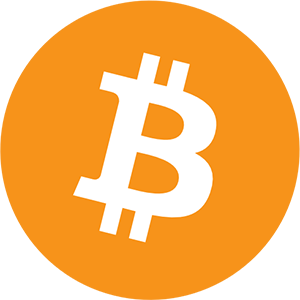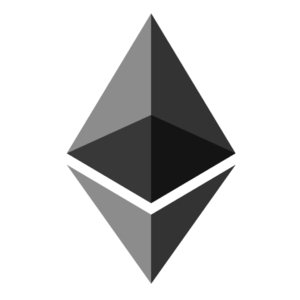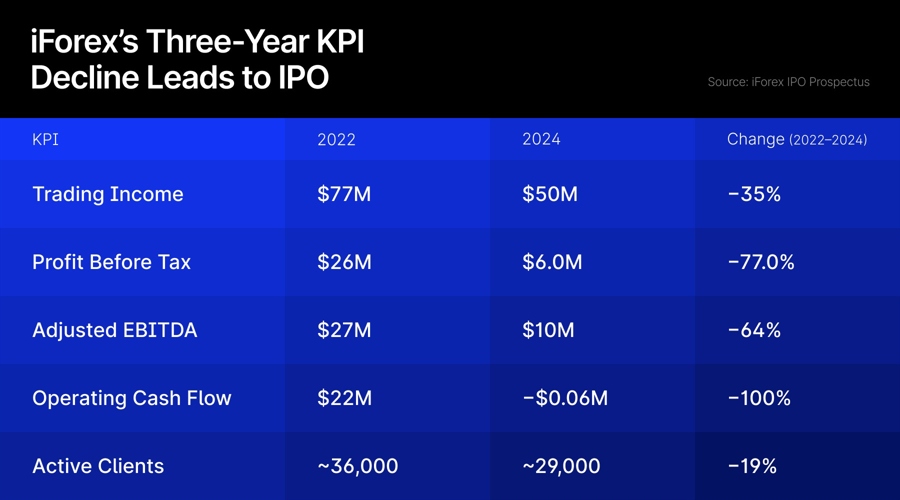In just two years, iForex has lost 20% of its active clients, with trading income shrinking by 35% and profits plummeting by over 75%. Looking to solve this problem, the broker aims to expand into new markets to reduce its dependence on revenue that is currently generated more than 50% from just two countries.
To achieve this goal, the company has decided to transform into a publicly traded entity to raise capital from external investors. However, the question remains: will the costs of going public outweigh the potential benefits?
iForex Turns to IPO to Salvage Key Financial Metrics
In a week when all eyes are on eToro’s anticipated Wall Street debut, another player has decided to join the ranks of publicly traded companies. iForex has announced plans to list on the London Stock Exchange (LSE), seeking to reverse a troubling financial slide.
According to the registration document filed with the UK Financial Conduct Authority (FCA), iForex’s financial performance has deteriorated steadily in recent years. Trading income dropped from $76.8 million in 2022 to $50.1 million in 2024, a decline of over 34%.
Profit before tax fell even more sharply, from $26.1 million to $6.0 million, while adjusted EBITDA margins halved over the same period. In 2024, cash flow from operations turned negative, coming in at just under minus $60,000.
The broker attributes this decline to a combination of external pressures and internal limitations. Lower volatility in global markets reduced client trading appetite, particularly in FX, while competitive pressures forced tighter spreads.
iForex’s client base also shrank, from approximately 36,000 active clients in 2022 to 29,000 in 2024. This contraction was most visible in Europe and Latin America, offset only partially by resilience in Asian markets.
However, the company claims the beginning of 2025 showed positive signs: “3,558 new clients were added in Q1 2025, which is more than in the equivalent period last year and the previous quarter, which is an encouraging sign that the business is making progress.”
Going Public as a Strategic Reset
Faced with declining key performance indicators (KPIs), iForex is turning to equity markets for a reset. The company is seeking admission to the LSE with a proposed capital raise of around £5 million. It plans to use these funds to expand into new markets.
According to its prospectus, iForex intends to use the funds to secure regulatory licenses in Australia, Malaysia, the UAE, Chile, and the UK. These jurisdictions represent both growth opportunities and a hedge against overreliance on existing markets.
Currently, iForex operates through two companies: offshore Formula Investment House Ltd established in the British Virgin Islands and iCFD Ltd, licensed by Cyprus’s CySEC.
50% of Revenue from Just Two Countries
In 2024, more than 50% of the company’s revenue came from Asia, specifically two countries: Japan (35.3%) and India (17%). Such concentration poses significant regulatory and macroeconomic risks.
This heavy geographic dependence exposes the firm to substantial regulatory and economic vulnerabilities. Changes in local laws, enforcement practices, or client behaviors in either market could dramatically affect performance. Japan is considered the Group’s “core market,” and India, while significant, currently lacks a formal legal framework for CFD trading, adding another layer of uncertainty.
“Given that a large proportion of the Group’s revenue is generated from clients based in a small number of jurisdictions… the impact of receiving a challenge or enforcement action in relation to one or more of those jurisdictions would be particularly significant,” the company acknowledges.
Over Half of Revenue Not From Forex
Despite the name, iForex is no longer a forex-only business. According to the company’s 2024 data, only 37% of client transactions involved currency pairs. In contrast, commodities and indices accounted for 52% of all trading activity, with the remaining 11% coming from stocks, ETFs, and cryptocurrencies.
The company’s business model relies primarily on dealing spreads, which contributed $47.5 million (around 70%) to total revenue in 2024. An additional $12.7 million came from overnight financing charges, while $6.2 million was derived from net profits and losses on client positions.
Moreover, client behavior at iForex is overwhelmingly mobile-first. In 2024, out of approximately $406.9 billion in total trading volume, a staggering $317.3 billion (78%) was conducted via mobile devices. By comparison, only $89.6 billion came through desktop web platforms.
New client trends mirror this shift: over 10,300 new clients joined the platform via mobile, versus just 3,000 through the web version.
This year, the company presented the “Vault,” a new fund management feature that allows traders to secure portions of their capital away from market exposure while maintaining instant access when needed.
A Risky Bet or a Timely Repositioning?
iForex believes that becoming a publicly traded company will “position it to compete more directly with its global listed competitors.”
The company is candid about the risks of the planned IPO. It warns in its prospectus that if it does not deliver the expected benefits, enhanced capital access, brand credibility, and market entry, the costs of going public could outweigh the advantages. The firm is also exposed to fluctuations in client activity, ongoing regulatory scrutiny, and rising competition from larger, better-funded peers.
“However, there are no assurances that this will be the case,” iForex says about the risks. “If this expected benefit does not materialize, the costs associated with the listing may outweigh the benefits and this could have a material adverse effect on the Group’s business, prospects, financial condition and/or results of operations.”
Competing with other publicly listed brokers may also prove challenging. In terms of scale, iForex remains a relatively small player in the global brokerage space. Its estimated 2024 revenue of $50 million compares to approximately $400 million for Polish broker XTB and over $300 million for CMC Markets in the UK. Both rivals are already publicly listed and operate under multiple licenses across the EU, Asia, and Latin America.
Nevertheless, for iForex, the IPO appears to be a necessary step. With profitability under pressure and growth flattening in legacy markets, the move to tap public capital could determine whether the company rebounds or continues to contract.
The broker is attempting to halt a downward trajectory through strategic reinvention, geographic diversification, including potential acquisitions of other entities, and a long-awaited injection of fresh capital.
This article was written by Damian Chmiel at www.financemagnates.com.AnalysisRead More
You might also be interested in reading World’s Third Largest Department Store ‘El Corte Inglés’ to Launch Cryptocurrency Exchange .



